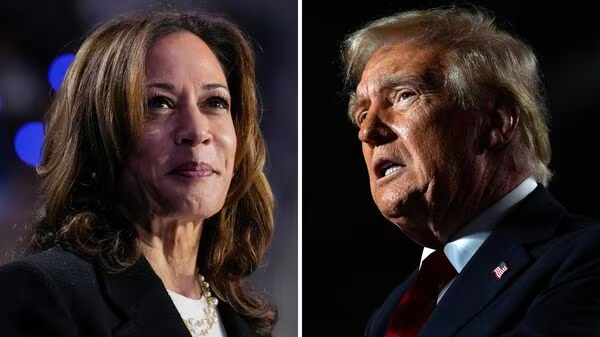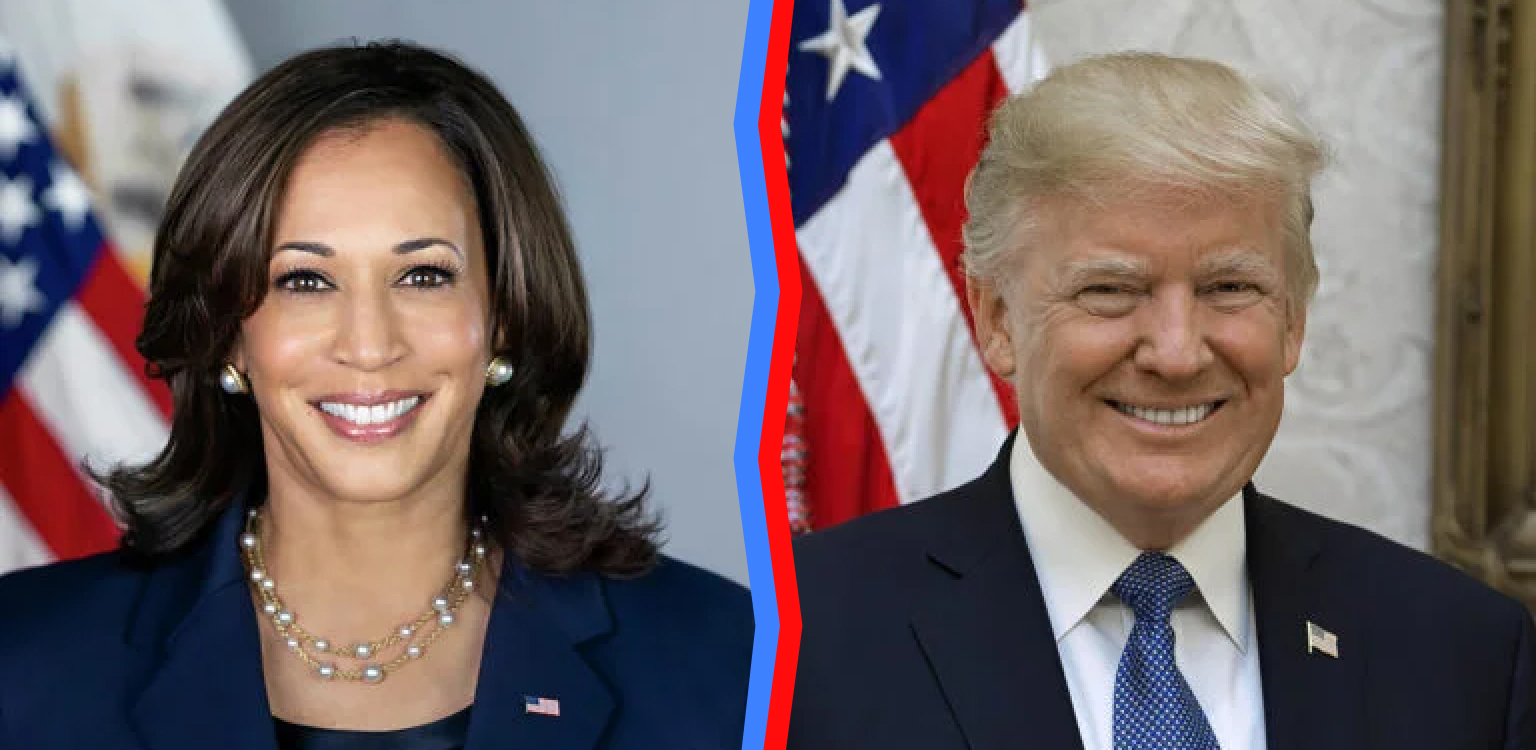As the 2024 U.S. presidential race heats up, two contenders are capturing national attention: former President Donald Trump and current Vice President Kamala Harris. Their potential showdown represents not only a clash of personalities but also a choice between two divergent visions for America’s future. With Trump’s populist approach and Harris’s progressive policies, each candidate has a unique path to the White House. This article delves into the strengths, strategies, and challenges that each might face on their journey to the presidency.
Background of Donald Trump
Donald Trump entered politics as an outsider, bringing his business acumen and unfiltered style to the forefront. After a surprising victory in 2016, his presidency focused on economic growth, tax reform, and a shift in foreign policy under the “America First” banner. Trump’s four years in office were polarizing but established a loyal following among conservatives. He left a mark on U.S. politics, emphasizing a nationalist perspective and deregulation, which appealed strongly to his base and contributed to his image as a leader who breaks the mold.
Background of Kamala Harris
Kamala Harris’s background in law and her ascent to the Vice Presidency have made her a prominent figure in American politics. As a former California attorney general and U.S. senator, Harris’s political career is built on a commitment to progressive values. Her history of advocating for criminal justice reform, social equity, and healthcare has resonated with a broad coalition of supporters. In her role as Vice President, she has been an advocate for marginalized communities, focusing on addressing systemic inequalities and championing environmental policies.
Contrasting Political Philosophies
At the heart of the Donald Trump vs Kamala Harris matchup is a stark difference in political philosophies. Trump’s emphasis is on individual economic freedom, reduced government intervention, and a strong national identity. In contrast, Harris advocates for social welfare, climate action, and equality across socioeconomic lines. These opposing ideologies capture the divisions within American society and will likely frame much of the 2024 election debate.

Core Campaign Issues in the 2024 Election
With Trump and Harris bringing their unique platforms to the race, several core issues will dominate their campaigns. Key topics include the economy, healthcare, climate change, immigration, and social justice. Here’s how each candidate’s stance on these issues could define their campaign strategy and appeal to different voter bases.
Economic Policies: Trump’s Growth vs. Harris’s Equity
For Trump, the economy is about stimulating growth through deregulation and tax cuts, a model that he argues promotes business investment and job creation. He continues to champion reduced taxes for corporations and sees business growth as a path to greater prosperity for Americans. Harris, on the other hand, promotes economic equity, focusing on raising the minimum wage, supporting social welfare programs, and closing wealth gaps. She aims to shift resources to benefit low- and middle-income Americans, a stance that appeals to voters prioritizing economic fairness.
Healthcare: A Right or a Privilege?
Trump’s position on healthcare emphasizes a free-market approach, seeking to reduce government intervention and limit federal control. He has expressed opposition to the Affordable Care Act, viewing it as restrictive to personal choice and detrimental to businesses. Conversely, Harris supports expanding healthcare access and views it as a basic right. She advocates for affordable healthcare for all, a stance that resonates with voters concerned about medical expenses and quality healthcare access.
Foreign Policy: Nationalism vs. Multilateralism
Foreign policy marks another clear divide between Trump and Harris. Trump’s “America First” approach reshaped U.S. global relations, focusing on domestic priorities over international alliances. His stance appeals to those who believe the U.S. should prioritize self-sufficiency and reduce foreign aid commitments. Harris, however, supports a multilateral approach, emphasizing partnerships with allies and a collaborative approach to global challenges like climate change. This appeals to voters who view diplomacy and international cooperation as essential to global stability.
Climate Change: Action or Deregulation?
Climate policy is likely to be a defining issue in this election. Trump’s stance promotes deregulation of energy industries, advocating for American energy independence through traditional energy sources like oil and coal. Harris takes an opposite view, seeing climate change as a pressing global threat. She supports renewable energy investments, aims to reduce carbon emissions, and advocates for international agreements. For environmentally conscious voters, Harris’s climate agenda represents a stark contrast to Trump’s more traditional energy policies.
Social Justice and Racial Equality
Social justice and racial equality have become critical issues in modern politics. Trump’s stance centers around “law and order,” appealing to voters who prioritize security and stability. His policies support law enforcement and emphasize a conservative approach to crime and punishment. Harris, as a woman of color with a history in criminal justice reform, advocates for addressing racial disparities in law enforcement and promoting social justice. Her stance resonates with voters who believe in the need to reform systemic inequalities.
Leadership Style and Public Image
The leadership styles of Trump and Harris also differ dramatically. Trump’s outspoken and direct manner appeals to those who admire his confidence and willingness to challenge the political establishment. His often-unconventional approach has kept him in the public eye, bolstering his image as a strong, independent leader. Harris, on the other hand, is more reserved, focusing on diplomacy and consensus-building. Her approach appeals to voters looking for stability, empathy, and a willingness to listen, especially in contrast to Trump’s bold style.
Target Audience and Support Base
The target audiences of Trump and Harris reflect the polarized nature of American politics. Trump’s base largely comprises conservative voters, many of whom are from rural areas, small towns, and working-class communities. His supporters value traditional family values, national pride, and limited government. Harris’s supporters, by contrast, are a diverse coalition that includes younger voters, minorities, and urban populations. Her appeal lies in her advocacy for progressive policies and social change, resonating with those who want a more inclusive and equitable America.
Debate and Public Speaking Style
In debates and public appearances, Trump’s style is confrontational and attention-grabbing, often using his platform to directly address and energize his base. He is known for using rhetoric that appeals to emotion and patriotism, positioning himself as a strong, uncompromising leader. Harris, meanwhile, takes a more methodical and poised approach. Her debate style often focuses on facts and policy details, appealing to voters who value substance over theatrics. This difference in communication style could play a key role in swaying undecided voters.
Public Perception and Media Representation
Public perception and media coverage play significant roles in shaping the candidates’ images. Trump’s relationship with the media is complex; he frequently criticizes mainstream outlets, which appeals to his supporters who distrust traditional media. Harris, in contrast, generally enjoys more favorable coverage from left-leaning media outlets, positioning her as a symbol of progress and diversity. The way media portrays each candidate can influence voter attitudes, especially among undecided voters who rely on media for information.
Challenges Each Candidate Faces
Both Donald Trump vs Kamala Harris face significant challenges on their paths to potential victory. Trump’s polarizing personality may limit his appeal among moderates, while Harris must navigate criticism from both conservatives and progressive activists who feel her policies aren’t far-reaching enough. For Trump, legal issues and controversies from his previous term may resurface, affecting his image among moderate Republicans. For Harris, her perceived lack of assertiveness and controversies related to her prosecutorial record may present hurdles in gaining widespread support.
Polling Trends and Predictions
Current polling suggests a closely contested race. Trump’s stronghold remains within his loyal base, which largely backs his policies and approach. Harris’s support is broader, pulling from a more diverse demographic, but she needs to inspire high voter turnout to secure victory. Swing states and voter turnout are likely to be the deciding factors, as each candidate works to energize and mobilize their supporters.
Conclusion
The 2024 election offers a choice between two vastly different paths for America. Donald Trump, with his “America First” policies and conservative approach, appeals to those who want a strong national identity and limited government intervention. Kamala Harris, on the other hand, champions social justice, climate action, and multilateralism, resonating with voters who seek a more inclusive and progressive future. As the election approaches, both candidates will refine their messages and mobilize their bases. Ultimately, the outcome will depend on which vision for America resonates most with the voters and which candidate can effectively rally support in the pivotal months leading up to Election Day.


